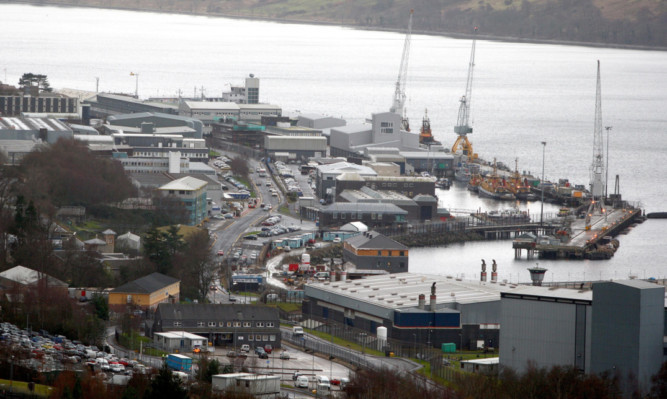Prime Minister David Cameron would not support proposals to designate the Clydeside home of the Trident nuclear deterrent as sovereign United Kingdom territory if Scotland votes for independence, Downing Street said today.
A Number 10 spokesman said no such idea had been presented to Mr Cameron or to Defence Secretary Philip Hammond, adding that it would not be a “credible or sensible” course of action.
The Guardian today quoted an unnamed defence source as saying that the idea of a sovereign base would be “an option” to avoid the “eye-watering” cost of decommissioning the Faslane naval base on the Clyde, which would run into tens of billions of pounds.
But the Number 10 spokesman said: “This Government has not commissioned contingency plans over Faslane. No such ideas have come to the Secretary of State or the Prime Minister.
“They would not support them if they did. It’s not a credible or sensible idea.”
The Scottish Government has made clear it would want Trident removed from Scottish territory as soon as possible if next year’s referendum delivers a Yes vote for independence.
The defence source suggested that designating Faslane as sovereign UK territory would give it the same status as British sovereign military bases in Cyprus.
The source told the Guardian: “It would cost a huge amount of money, running into tens of billions of pounds, to decommission Faslane. Those costs would be factored into any negotiations on an independence settlement. The sovereign base area is an option. It is an interesting idea because the costs of moving out of Faslane are eye-wateringly high.”
Defence Secretary Philip Hammond warned earlier this month that moving the base for the continuous at-sea nuclear deterrent would “cost a significant amount of money” but the Government has always officially insisted it is not working on other options because it expects Scots to vote to remain in the UK.
An MoD spokesman said: “No contingency plans are being made to move Trident out of Scotland. The scale and cost of any potential relocation away from Faslane would be enormous.”
Scottish National Party defence spokesman Angus Robertson described the sovereign territory idea as “an extraordinary attempt by Westminster to bully Scotland”.
Mr Robertson added: “Neither the people nor Parliament of Scotland want nuclear weapons dumped here, and we are clear that Trident would have to be removed as quickly as possible – only a Yes vote next September will empower Scotland to get rid of Trident, and the money saved will help build a fairer society and stronger economy.
“A key argument for independence is that Scotland will no longer have to pay for nuclear weapons that we do not want. A No vote, by contrast, means a new generation of nuclear weapons on the Clyde for another 50 years.”
Responding to the report, Perthshire South and Kinross-shire MSP Roseanna Cunningham tweeted: “Hello Rest of World! Are you paying attention? Westminster threatening annexation in event of Scottish independence.”
